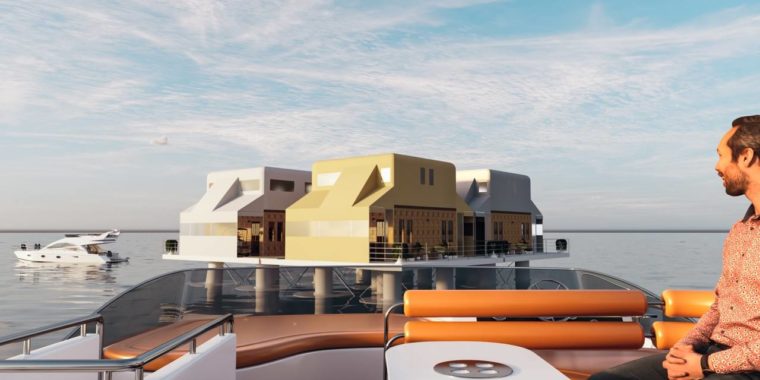
I recently had a discussion with Mitchell from Stead on my Cryptocurrency Podcast about seasteading, floating infrastructures and how their new decentralized lending platform fits into this paradigm. It was a fascinating conversation and I learned a lot about seasteading.
Seasteading is a concept that involves building permanent human habitation in international waters. The idea is to create floating cities that are self-sustaining and autonomous, and that can provide a range of benefits, from reducing overcrowding in cities to promoting environmental sustainability.
At the heart of the seasteading movement is the idea of creating special economic zones in international waters that are governed by their own regulatory frameworks. These zones would be designed to promote innovation and economic growth, and would be subject to a combination of international law and private contracts.
One of the key advantages of seasteading is that it can help to reduce overcrowding in cities. By creating new living spaces in international waters, seasteading can provide an alternative to traditional urban living that is more sustainable and less crowded. This can help to reduce the strain on existing infrastructure and resources, and can promote a more balanced and equitable distribution of wealth and opportunity. Another advantage is that it can help to promote environmental sustainability. By using renewable energy sources and advanced water purification and waste management systems, seasteads can be designed to be self-sustaining and environmentally friendly. This can help to reduce the impact of human activity on the natural environment, and can promote a more sustainable and resilient way of life.
From a technical standpoint, seasteads require a platform that can support the weight of a house or other structure, as well as withstand the forces of wind, waves, and currents. The platform must also be self-sustaining, meaning that it can generate its own power, purify its own water, and dispose of its own waste, which sounds like a lot for a sole inhabitant in the middle of the ocean, but if we’re talking about an autonomous community in international waters, these services can be shared by residents who specialize their seastead in a certain area. Maybe you’ll be dealing with the water filtration system while your neighbors takes care of the emergency grid system.
The main appeal for seateading in international waters is greater autonomy. Because seasteads can be lcoated in international waters, they are not subject to the laws of any single country. This means that seasteaders can create their own regulatory frameworks and governance structures, and can enjoy a greater degree of freedom and self-determination than they would in traditional urban environments. Living in international waters can also offer greater economic opportunity. Seasteads can be designed to be hubs of innovation and entrepreneurship, with special economic zones that are designed to promote economic growth and development. This can create new opportunities for businesses and individuals, and can help to promote a more equitable distribution of wealth and opportunity.
But of course, in order to get there, there’s a lot of engineering involved. Mitchell says that he spent the last 1.5 years engineering the platform on which the Steastead will need to stand on. The Stead team are currently working building the first seastead concept, designed as a sustainable floating house, inspired by the same technology that Oil rigs use to stabiles themselves on sea. Seasteads will be raised above the sea level so that the house is perfectly stable even in waters with up to 10 foot waves.
In order to work towards this goal, and help people in developing economies get access to funds that they may otherwise be unable to, Stead uses blockchain technology to create a decentralized lending platform for managing inflatable infrastructure. The platform allows people to raise funds through the sale of Stead tokens, which can then be used to lease time on these structures.
For example, let’s say that someone wants to build a floating house but doesn’t have the funds to do so. They could create a campaign on the Stead platform and describe the project they’re looking to build in to raise the necessary funds. Users can then deposit crypto and receive Stead in return, effectively helping to raise capital for the project. Once the funds are raised and the structure is built, the operator of the floating house would now be required to burn Stead tokens in order to pay back the funding of the project.
Similarly, someone in a developing country who wants to buy a new fishing boat but doesn’t have access to bank loans could use Stead tokens to raise the necessary funds. This would enable them to purchase the boat and then pay a lease by burning tickets in order to keep ownership of the structure.
There’s great many nuggets in the podcast so if you’re curious to hear more about this topic, I highly recommend you checking it out on Spotify, YouTube or AppleMusic
Enjoyed this article?
Sign up to the newsletter
You’ll receive more guides, articles and tools via e-mail. All free of course. But if you value this blog and its educational resources, you can subscribe to become a paid member for only $3 a month. This will keep the website open and free.
